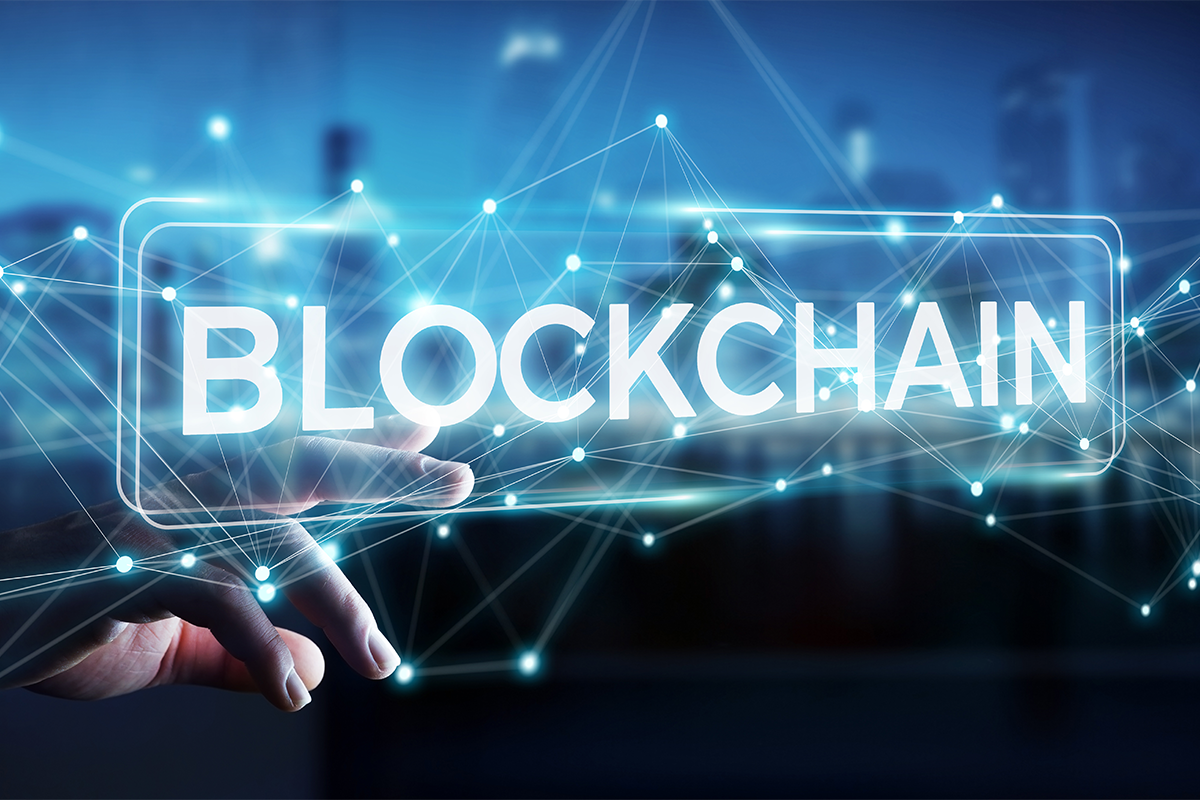The first blockchain was conceptualized in the year 2008. Since then, have evolved significantly and continue to disrupt blockchain technology trends various industries across the globe. As we step into 2023, it’s crucial to stay updated with the latest blockchain trends that are shaping the future.
In this blog, we’ll explore the top 10 new blockchain technology 2023 trends. These offer insights into how this transformative technology is changing the landscape of business, finance, and beyond.
What is Blockchain Technology?
Blockchain technology is a database system that enables transparent information sharing within a network of businesses or participants. It operates by storing data in a series of blocks that are securely linked together to form a chain. What sets blockchain apart is its inherent chronological consistency, which means that once data is added to the chain, it cannot be deleted or modified without reaching a general agreement among the network participants.
This unique feature makes it exceptionally suitable for establishing an unchangeable ledger. This ledger can be employed to meticulously record and track various types of transactions, including but not limited to orders, payments, accounts, and any other relevant activities.
Here are the key features and concepts associated with blockchain technology:
Decentralization: Unlike traditional centralized systems (e.g., banks), blockchain works on a decentralized network of computers. Each node in the network stores a complete copy of the blockchain ledger without relying on a singular central authority.
Distributed Ledger: Transactions are made into blocks and added to a chronological chain of blocks, hence the term “blockchain.” Once added, information in the blockchain cannot be altered, ensuring a transparent and damage-resistant record of transactions.
Consensus Mechanism: To validate and add transactions to the blockchain, a consensus mechanism is used. The most common agreement or consensus mechanism is Proof of Work (PoW) in Bitcoin, where nodes (miners) solve complex mathematical problems to confirm transactions. Other blockchains use Proof of Stake (PoS), Delegated Proof of Stake (DPoS), or other consensus algorithms.
Security: Blockchain uses cryptography to protect transactions and control the production of new units of digital assets. Once a transaction is added to the blockchain, it is nearly impossible to alter, ensuring the integrity of the data.
Transparency: Transactions on a public blockchain are visible to all participants in the network. This transparency can enhance trust and accountability.
Smart Contracts: Smart contracts are self-created or executed contracts with the agreement, which are directly created into code. Contracts are executed automatically when conditions are met, removing the need for intermediaries.
Blockchain Solution has a wide range of applications beyond cryptocurrencies, including:
Supply Chain Management: Blockchain can be widely helpful in tracking the production, shipment, and delivery of goods, providing transparency and reducing fraud.
Financial Services: It can streamline financial transactions, reduce costs, and improve security in areas like cross-border payments and remittances.
Healthcare: Blockchain can securely manage patient records, drug traceability, and streamline medical billing.
Voting Systems: It has the potential to create secure and transparent electronic voting systems.
Real Estate: Blockchain can simplify property transactions by securely recording ownership and titles.
Energy Trading: It can enable peer-to-peer energy trading and improve the management of renewable energy resources.
10 Blockchain Technology Trends:
Decentralized Finance (DeFi) Expands Further
DeFi platforms are revolutionizing traditional finance by offering decentralized lending, borrowing, and trading options. In 2023, we can expect more sophisticated DeFi projects to emerge, providing even greater financial inclusivity.
NFTs Go Mainstream
Non-fungible tokens (NFTs) have gained huge popularity in recent years. In 2023, NFTs are being widely recognized and are used to tokenize digital art, music, gaming, virtual real estate, and digital identity.
Enterprise Blockchain Adoption Rises
Businesses are increasingly embracing blockchain for supply chain management, record-keeping, and enhancing transparency. Expect more enterprises to integrate blockchain into their operations for greater efficiency.
Interoperability Solutions Gain Traction
Interoperability between different blockchain networks will become a focal point. Cross-chain solutions will enable smoother data and asset transfers, unlocking new possibilities.
Synergistic Potential of IoT
It has been recorded that the blockchain IoT market, valued at $134.41 million in 2021, is projected to skyrocket to an astonishing $19.740 billion by 2030, boasting a remarkable compound annual growth rate (CAGR) of 73.5%. It means experts anticipate a surge in automated insurance policies driven by the strength of Blockchain and IoT. This dynamic duo enhances security and also turbocharges transaction speeds while maintaining affordability. Additionally, businesses are to benefit from automation and the simplification of complex centralized IT infrastructures, promising a transformative journey ahead.
Tokenization of Assets
Assets such as real estate, art, and stocks can be tokenized on the blockchain, making them more accessible and liquid. It means involving the innovative process of translating tangible real-world assets into digital tokens. This transformative approach encompasses dividing assets, whether real estate, artworks, etc., into smaller, more manageable units. These units are then represented by tokens, which effectively signify ownership or a stake in the original asset.
Role of Cybersecurity
One of the recent incidents, like the Equifax cyberattack, which compromised the personal data of over 40% of the US population, has shown us the exposure rate in our existing identity data systems. In response, blockchain presents an innovative and robust solution for safeguarding identity data. With its inherent security features, decentralized structure, and cryptographic encryption, blockchain offers a top-notch secure identity approach that promises to fortify and protect current identity data systems.
Convergence of the Metaverse
The similarities between metaverse and blockchain technology represent a fascinating intersection. The metaverse is a concept that visualizes a virtual reality space where users can engage with one another. Simultaneously, blockchain technology is celebrated for its decentralized architecture and robust security features. As these two transformative forces continue to evolve, they hold the promise of reshaping how we interact with digital realms. It also offers new possibilities for immersive experiences and secure transactions within this emerging digital frontier.
Blockchain-as-a-Service (BaaS)
This concept is gaining significant traction within the blockchain industry, offering a streamlined approach to blockchain application development. BaaS entails cloud service providers furnishing businesses and developers with essential blockchain infrastructure and tools. From healthcare to real estate, every mobile app development can take place with BaaS.
BaaS services often incorporate scalability features, allowing applications to seamlessly adapt to fluctuating transaction volumes. Additionally, they tend to support a variety of blockchain protocols, granting businesses the flexibility to select the one that aligns most effectively with their specific needs. As a result, this is becoming an increasingly accessible and versatile tool for those looking to harness the potential of blockchain technology.
Fusion of Blockchain technology with Artificial Intelligence (AI)
In this exciting era of mobile app development. AI, with its fundamental algorithmic capabilities, has already proven itself by empowering machines to perform tasks beyond their original programming. However, the question that arises is how blockchain can further augment AI and unlock its full potential.
Machines need access to vast reserves of big data for maximum performance, but much of it is controlled by mainstream providers. Blockchain, known for secure and cost-effective data exchange, eases concerns for big data providers, fostering collaboration with AI developers. This combination fuels the creation of complex machine-learning algorithms, unlocking the potential for artificial sentience. As blockchain connects AI and big data, innovation knows no bounds.
In conclusion, as we embark on a new year, the blockchain landscape is filled with potential and promise. The top 10 blockchain technology trends for 2023 demonstrate the breadth of applications and innovations that this transformative technology offers. Whether you’re a blockchain enthusiast, entrepreneur, or industry professional, staying informed about these trends is essential. Blockchain is not just a technology; it’s a paradigm shift that is reshaping the world as we know it.
Frequently Asked Questions
1. How Does Blockchain Enhance Cybersecurity?
Blockchain offers robust security features, making it a reliable solution for safeguarding identity data and protecting against cyberattacks.
2. How Does Blockchain Augment Artificial Intelligence (AI)?
Blockchain provides secure and cost-effective data exchange, allowing machines to access vast amounts of big data. This synergy between blockchain and AI fuels the development of complex machine-learning algorithms and enhances the potential for artificial sentience.
3. What Are Some Applications of Blockchain Technology?
Blockchain has applications in supply chain management, financial services, healthcare, voting systems, real estate, energy trading, and more.
4. What Are the Top Blockchain Trends for 2023?
The top trends for 2023 include the expansion of Decentralized Finance (DeFi), mainstream adoption of Non-Fungible Tokens (NFTs), increased enterprise blockchain adoption, etc.










